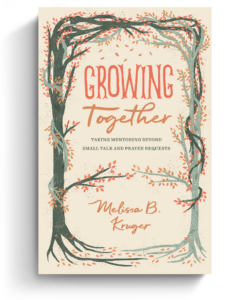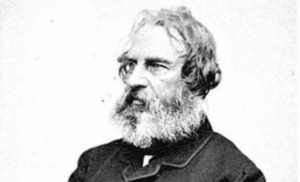TGC reviews media that is not suitable for everyone. To help readers make wise viewing decisions, we recommend reading “Should I Watch This?” and checking out a content guide.
The “rags to riches” tale is as old as time—from Cinderella to Slumdog Millionaire to The Social Network and more. These stories resonate in part because they’re aspirational. In vividly celebrating unlikely success, they invite audiences to picture themselves on a similar upward trajectory.
But a twist on the genre has gained popularity in recent years. Call it the “rags to riches to rags” tale, or the “rise and fall” narrative. Often cautionary moral tales about the perils of gaining the whole world only to lose one’s soul (Matt. 16:26), these narratives deconstruct the success story and temper viewers’ enthusiasm for “meteoric rise” ambitions in their own lives.
Plenty of incredible films have fallen into this category (Citizen Kane, A Star Is Born, There Will Be Blood), complicating the “American dream” of overnight fame and fortune. But in the last few years, it seems the “rise and fall” genre has become increasingly popular—whether podcasts about megachurch pastors, biopics about corrupt televangelists, or TV series about entrepreneurs whose startups rise only to crash (see below). Why the surge in narratives like this?
Examples of Recent ‘Rise and Fall’ Narratives
I’ll ponder the reasons for the appeal of “rise and fall” narratives below, but first consider the sheer number of recent examples just in the business/entrepreneurship sphere alone (and note how many of these stories inspired not one, but two, different narratives).
WeWork (2021 documentary) | WeCrashed (2022 series)
The brainchild of Israeli-American entrepreneur Adam Neumann, the coworking concept WeWork captured the 2010s zeitgeist of millennial optimism (naivete?) combined with new urbanism and the allure of collaborative creative synergy. Yet WeWork’s fast rise came to a screeching halt when its attempt to go public was an unmitigated disaster, described by the New York Times as “an implosion unlike any other in the history of start-ups.” The story has been told twice in recent years, once in a Hulu documentary and most recently in an AppleTV+ series starring Jared Leto as Neumann and Anne Hathaway as his wife Rebekah.
The Inventor (2019 documentary) | The Dropout (2022 series)
Similar to Neumann, Elizabeth Holmes was briefly on top of the tech world only to crash into infamy a short time later. Her now-defunct company Theranos promised to leverage new technology to radically rethink the blood-testing industry, but the headline-grabbing Silicon Valley concept ended up being a run-of-the-mill fraud. Following a 2019 HBO documentary, the story of Holmes and Theranos most recently inspired a Hulu series starring Amanda Seyfried with a very amusing (and pretty accurate) accent.
Fyre: The Greatest Party That Never Happened (2019 documentary) | Fyre Fraud (2019 documentary)
The infamous Fyre Music Festival in 2017 was such a juicy, can’t-turn-away disaster that it inspired two documentaries: one on Netflix and one on Hulu. I even wrote an article about Fyre’s lessons for the church in an age of Instagram fakery. Much like the other “rise and fall” dramas on this list, the Fyre story is a classic example of how the shrewd deceptions and glossy fronts of charismatic shysters will catch up with them eventually.
LuLaRich (2021 docuseries) | The Rise and Fall of LuLaRoe (2021 documentary)
Audiences love to watch a pyramid scheme collapse, especially one that involves garish women’s leggings. That’s why the LuLaRoe saga inspired not one but two recent documentaries (one on Amazon, the other on discovery+). Multilevel marketing schemes are in some ways an easy target for “cautionary tale” stories, preying as they do on naive (gullible?) folks eager to sign on in hopes of cashing in—even if it sounds too good to be true.
White Hot: The Rise & Fall of Abercrombie & Fitch (2022 documentary)
This Netflix documentary tells the story of how retailer Abercrombie & Fitch (founded in 1892) was rebranded in the 90s as a young adult “cool kid” label, and subsequently exploded in popularity, becoming a shopping mall juggernaut that permeated a 30-foot radius of every store with its pungent cologne. Yet the brand’s “white-hot” surge didn’t last, as its lack of racial diversity and “only for good-looking people” marketing led to scandals, lawsuits, and eventual disfavor among Gen Z. For those who went to high school in the 90s (as I did), the documentary is a cringeworthy trip down memory lane—perhaps a film you might pair with Hulu’s three-episode series on the rise and fall of Von Dutch trucker hats.
Super Pumped: The Battle for Uber (2022 series)
This first season of this Showtime anthology series takes as its subject “the meteoric rise and fall of Uber founder, Travis Kalanick,” and reportedly its second season will be about Facebook. It stars Joseph Gordon-Levitt as Kalanick and Uma Thurman as Uber board member Arianna Huffington. The show’s promotional material includes a classic “rise and fall” plot description: “Kalanick takes a win-at-all-costs approach to forge the fledgling start-up into a multi-billion-dollar tech titan. But every surge comes at a price—and as his visionary drive spirals out of control, it threatens to be the downfall of it all.”
What’s the Appeal?
Why the prevalence and popularity of this genre? What appeals to us in the “rise and fall” narratives, particularly those about entrepreneurs who become victims of their own (often shady) success? The possible reasons are many. Here are just four.
1. It’s easier to critique than create.
Criticism is the currency of the social media age. Deconstruction is easier than construction. Shaking our heads at the foolishness of fallen CEOs, saying “I told you so” in response to a startup’s crash, piling on a canceled public figure on Twitter: these are all easier than taking risks to try (and yes, maybe fail) building something yourself. Yuval Levin makes some helpful comments on this dynamic in A Time to Build.
2. Once laudable, millennial optimism is now deemed “toxic positivity.”
These narratives appeal in part because they show overconfident, privileged, borderline-delusional entrepreneurs (many of them millennials) get smacked in the face with reality—their idealistic bubbles popped by the harsh realities of an unjust world. Their unearned optimism and rose-colored vision are grating for Gen Z viewers, whose heroes tend to be defined by trauma, marginalization, and activism more than capitalist bravado and big vision. For more on this, with some of the best insights I’ve read about the difference between millennials and Gen Z, check out this piece by Chris Colquitt.
3. We have no tolerance for being manipulated by elites.
The populism of recent years, coupled with deepening distrust of powerful elites (from Wall Street to D.C. to Silicon Valley), likely plays into the popularity of this genre. Watching very rich, very powerful people get their comeuppance feels like satisfying payback for the various ways they swindled, manipulated, or otherwise used everyday people to get to the top. It feels like justice served.
4. We like to see justice come to bad (other) people.
The social media age—able as it is to amplify all manner of maddening reports of injustice—has a way of riling us up with righteous indignation at the evildoers wreaking havoc across the world. We relish seeing at least some wicked people get caught and punished, even if we’re less enthused by our own deserved judgment. Perhaps this is why we binge shows depicting the long-term costs of sinful shortcuts for momentary gain (like Netflix’s popular Inventing Anna or even AMC’s classic Breaking Bad). They echo the reminder of Proverbs 11:21: “Be assured, an evil person will not go unpunished, but the offspring of the righteous will be delivered.”
How Should Christians See These Stories?
For all these reasons and more, “rise and fall” narratives are satisfying to watch. But are they edifying? Should Christians view these shows in the same manner as the world?
If we’re watching them through a lens that is less “failure porn” and more “heeding wisdom to avoid a similar fate,” there’s value to be gained. We should lament and learn from the sins on display, but with sober awareness that we too are guilty and will be judged. Scripture warns us against being “glad at calamity” (Prov. 17:5) and tells us to “not rejoice when your enemy falls” (Prov. 24:17). Jesus calls us to love our enemies. For Christians, relishing the demise of other sinners is not a good look. Instead, pray for them—and pray for yourself.
For Christians, relishing the demise of other sinners is not a good look. Instead, pray for them—and pray for yourself.
Another way we might view these narratives in a different light is by letting them remind us of how Jesus inverts the “rise and fall” trajectory—and calls us to do the same. If the “rise and fall” arc characterizes those who gain the world only to lose their souls (and often, their money, status, and friends), it’s the “fall and rise” J-curve that characterized Christ and characterizes his followers. In dying to themselves, Christians find fullness of life.
History’s greatest “fall and rise” narrative is captured poetically in Philippians 2:6–11, structured neatly in two halves: fall (vv. 6–8) and rise (vv. 9–11). In a world of ambition, status, and climbing ladders, Jesus started at the top and went all the way down: a servant, crucified in humiliating fashion. But then? A spectacular rise—exalted to the uttermost, the name above all names.
So yes, watch these “rise and fall” narratives to be reminded and sobered by the reality of Matthew 16:26: “What will it profit a man if he gains the whole world and forfeits his soul?” But also watch them to be reminded of the “fall and rise” verses immediately preceding it (vv. 24–25): “Then Jesus told his disciples, ‘If anyone would come after me, let him deny himself and take up his cross and follow me. For whoever would save his life will lose it, but whoever loses his life for my sake will find it.’”
Involved in Women’s Ministry? Add This to Your Discipleship Tool Kit.
 We need one another. Yet we don’t always know how to develop deep relationships to help us grow in the Christian life. Younger believers benefit from the guidance and wisdom of more mature saints as their faith deepens. But too often, potential mentors lack clarity and training on how to engage in discipling those they can influence.
We need one another. Yet we don’t always know how to develop deep relationships to help us grow in the Christian life. Younger believers benefit from the guidance and wisdom of more mature saints as their faith deepens. But too often, potential mentors lack clarity and training on how to engage in discipling those they can influence.
Whether you’re longing to find a spiritual mentor or hoping to serve as a guide for someone else, we have a FREE resource to encourage and equip you. In Growing Together: Taking Mentoring Beyond Small Talk and Prayer Requests, Melissa Kruger, TGC’s vice president of discipleship programming, offers encouraging lessons to guide conversations that promote spiritual growth in both the mentee and mentor.

































